A lovely motorhome stop in Graiguenamanagh, Co Kilkenny
It was mainly chance that brought us to the motorhome aire at Graiguenamanagh in County Kilkenny, well that and lots of good reviews on Park4night (N52.538794, W6.956572). We’d planned to go straight to Kilkenny city, but then worked out it would be a couple of hour’s driving, and also that Kilkenny has a Parkrun on Saturdays.
We love a Parkrun and there are quite a few in Ireland, so we’ll probably plan our tour of the country around where we need to be on Saturday morning for our free 5km (3.1 mile) run fix. Going straight there would have meant several nights in the city, so we decided to stop off at Graiguenamanagh on the way for a couple of nights.
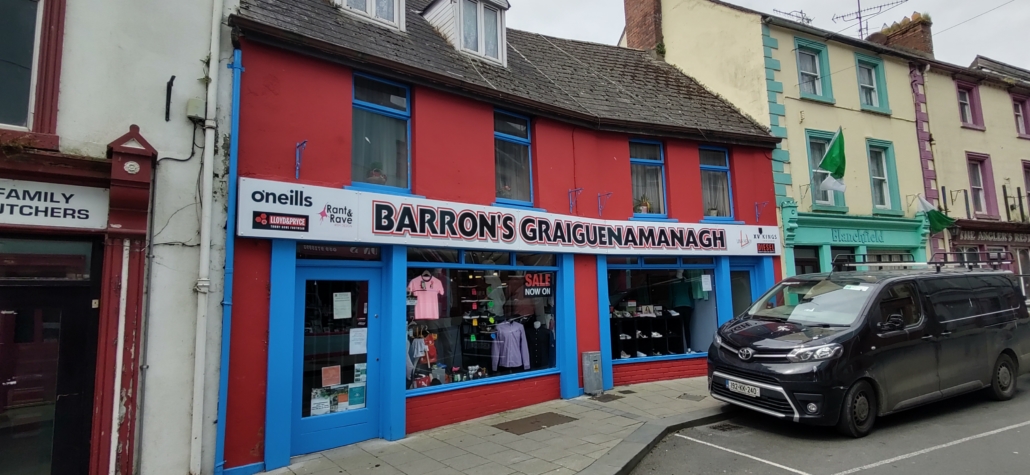
Rolling down the drive into the Graiguenamanagh activity centre we knew we’d made a good choice. In front of the reception building sat a large grassed area with small gravel pitches all overlooking the river. A fire pit, tented shelters and picnic benches were all available too, so we didn’t even need to get our camping chairs out.
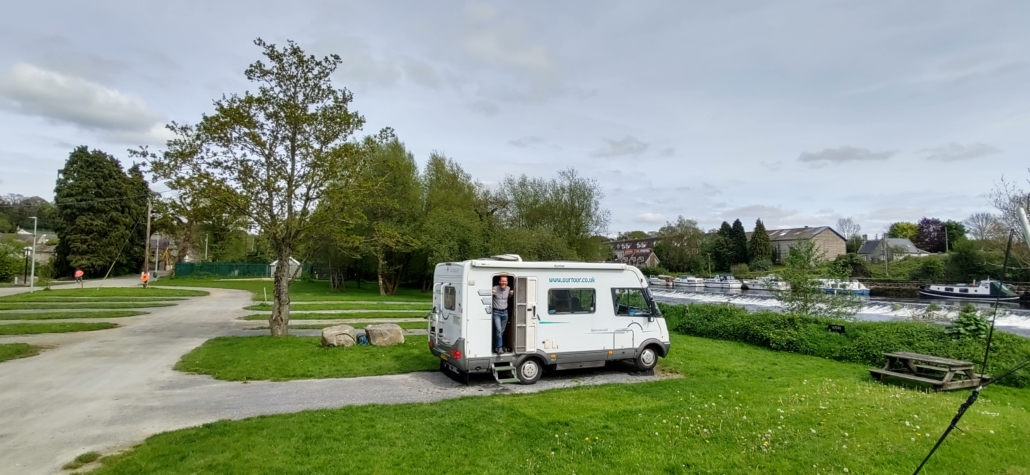
While Jay used the service point, I wandered into the activity centre building to pay. I was allocated a pitch and told about the honesty box for the showers (€1) and the code to access the loos around the back of the building when there are no staff around. It cost €12 per night without hook-up, and was certainly worth it.
A look in our Lonely Planet Ireland guidebook and we were surprised to see this little village appear, let alone take up nearly a page. The main draws are Duiske Abbey (Graiguenamangh means ‘hamlet of the monks’) and The Barrow Way. The Barrow which flowed in front of Zagan’s windscreen is the second longest river in Ireland (the Shannon being the longest) and along its towpath is a 114km marked trail.
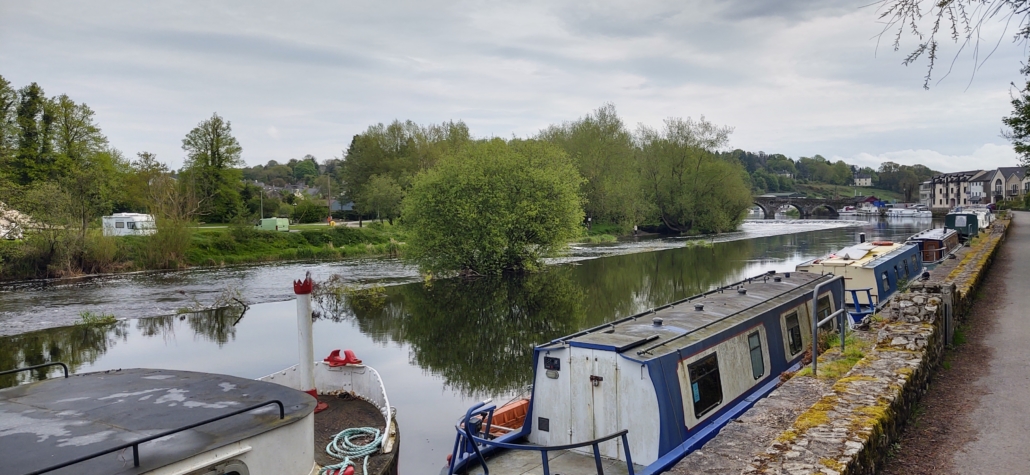
The Barrow Way ends in St Mullins around 7.5km downstream from Tinnahinch, which is the village across the river from Graiguenamanagh. The bridge between the two (which you can just see in the photo above) has been destroyed three times in its history. The great flood in 1763 destroyed it completely. Humans were then responsible for its partial demolition in 1643 when the Confederate Army wanted to keep out the British. Finally, it was again part-destroyed in the 1798 Rising by the British to keep the Wexford Rebels out. You can see the different type of stonework used to repair it where the British blew up the arch closest to Tinnahinch.
The Barrow Way was calling me, as my training plan required me to do a run of around 16km this week (we’re running the Derby Half Marathon in early June), so early Tuesday morning I ran along the towpath to St Mullins. I only passed two other people on the way there, getting to enjoy the beauty of the lush green countryside, bird calls and old lock-keepers cottages all to myself.
Arriving at small village of St Mullins I climbed up the hill from the river to a church yard, a few houses and a large grass-covered bump. Scrambling up the grassy bump gave me a view back down to the river and across the graveyard to several ruined buildings. It turned out that the bump was an Anglo-Norman motte on top of which a wooden castle would have been built. An information board told of the importance of the ruins which were St Mullins Monastery, founded in the 7th century by St Moling and it’s also the burial place of the Kings of Leinster.
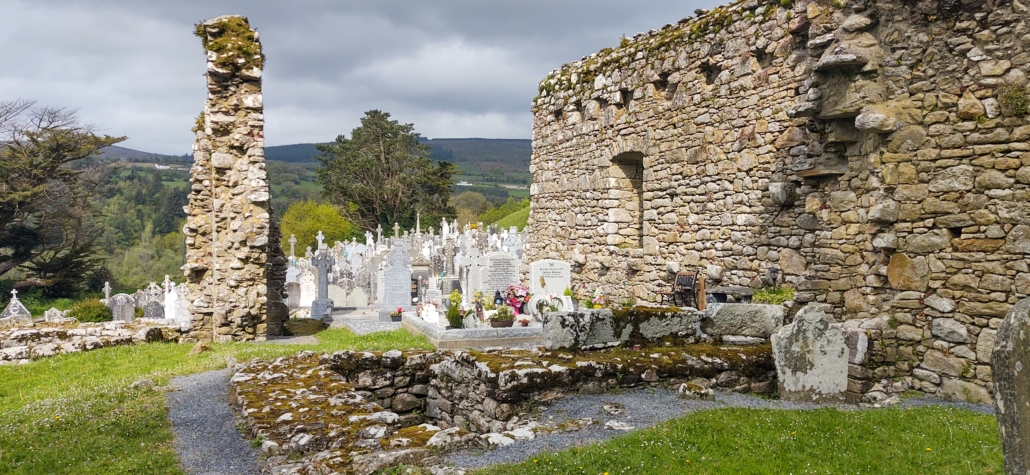
I wandered around the graveyard and got chatting to a lady who was watering the potted plants on the graves. She told me what an historical graveyard it was and pointed me in the direction of the graves of General Thomas Cloney (a hero of the 1798 Rising) and that of Art, one of the Kings of Leinster as well as St James’ Cell. I wondered why they would lock up St James, but Jay pointed out later when I told him that monks lived in cells so it was probably just his home.
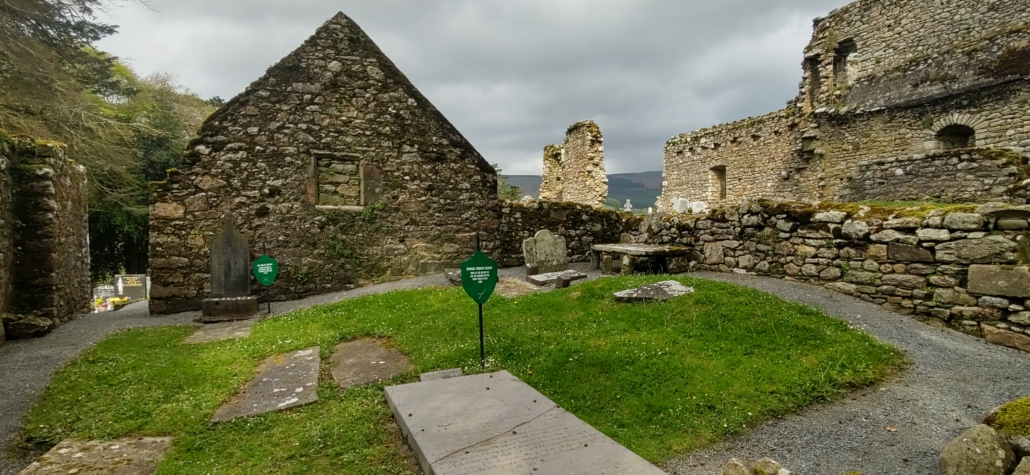
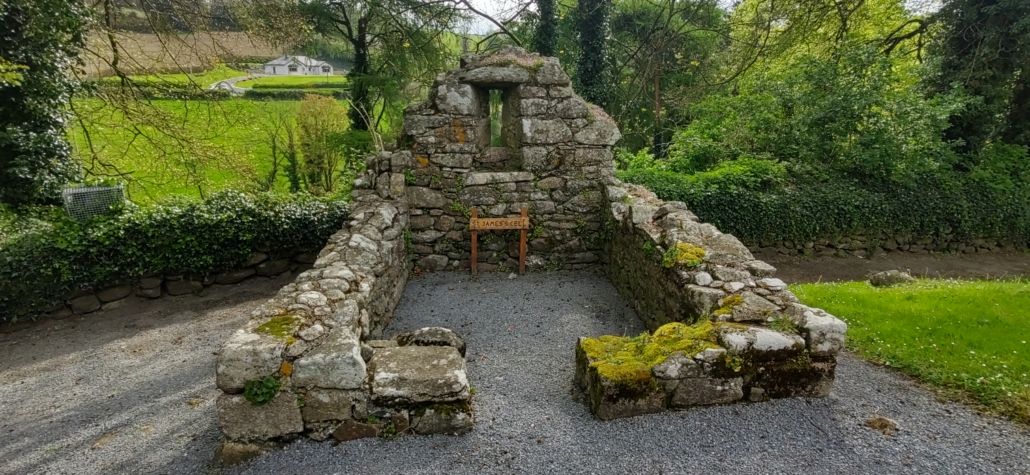
Dotted around the graveyard were small green signs, marking out the graves of heroes of the 1798 Rising. There was also a monument to the men who died in it, which was when it dawned on me that there wasn’t a memorial from the second world war. When we got our Lonely Planet guide the first parts Jay read were about history, wars and politics, where as I read about different foods to try, so it took me a while to remember that Ireland was neutral in World War Two (although many Irish fought on the Allied side) and has had a fraught relationship with the UK for centuries (to say the least), so it’s no wonder that the usual commonwealth war memorial wasn’t there.

After half an hour or so wandering around, the local cafe was still yet to open, so I started my jog back along the towpath only to find Jay waiting for me at St Mullins lock. We jogged back to the campsite and after a spot of lunch went for a wander around Graiguenamanagh. Dotted around the town are granite monks showing the everyday tasks they would perform. We didn’t see all of them but managed to meet – salmon fisherman, stone mason, basket weaver, choir, lumberjack and scribe.

After a quick look around the Duiske Abbey which was once Irelands largest Cistercian abbey we nipped across the road to Mick Doyle’s a shop-pub, which has been unchanged for generations. We’d walked past it the day before not daring to go in as it looked like the sort of place everyone would turn around and stare at you while the music stopped when you stepped inside. But no, we were greeted with a warm welcome as soon as we opened the door.
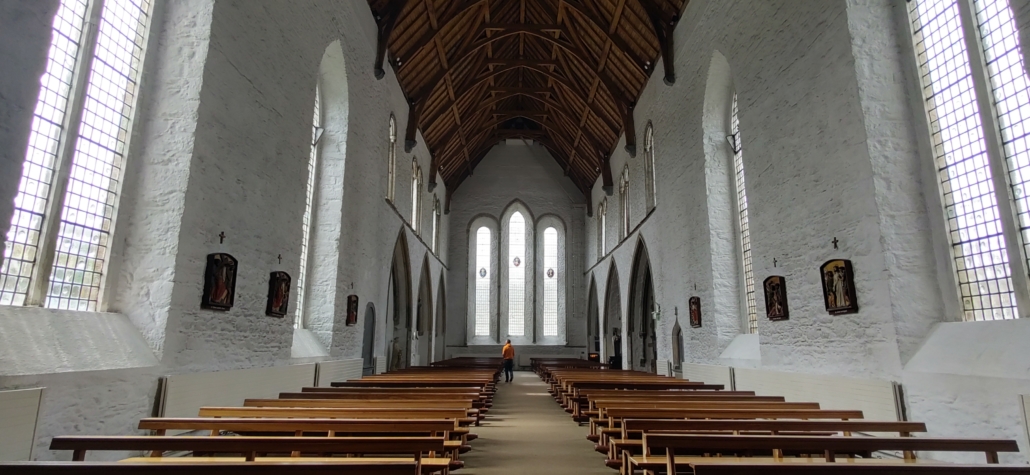
We bought two drinks, a bottle of alcohol free Erdinger and a ‘tall neck’ bottle of Bulmers cider. I gave the barmaid a €10 note and she said something about making it a ‘flat ten’. No change was forthcoming, so I figured maybe tourists pay more for their drinks. It was only when we passed another pub later that I spotted a ‘tall neck’ of bulmers was €6.50 so we may have just unknowlingly got ourselves a bargain. We really need to adjust to the fact that food and especially booze is a lot more expensive over here.
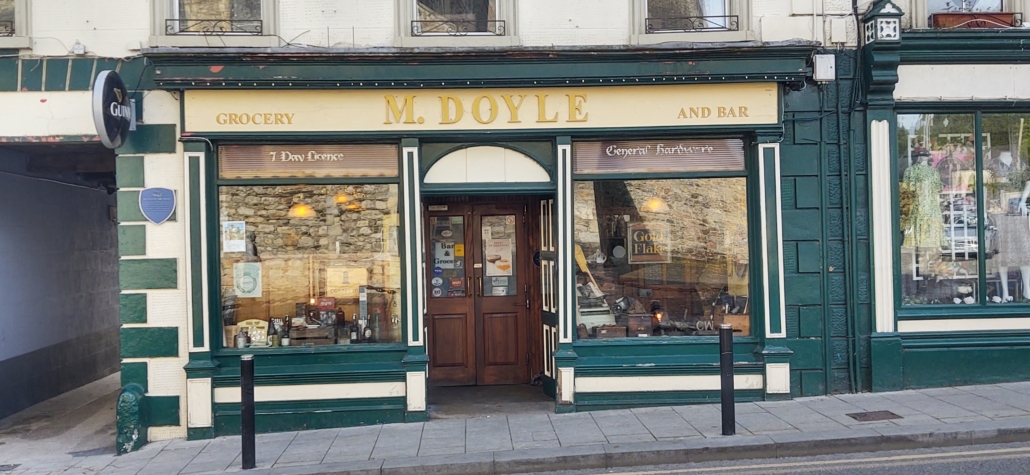
In the bar we got chatting to a chap at the hardware counter who had just celebreated his 75th birthday and claimed to be one of its longest serving customers. He told us that years ago the counter we were sat at would have been filled with vegetables. You could come in and buy everything you needed, as well as a pint. But such places are few and far between these days – the large Aldi supermarket up the road probably didn’t help.
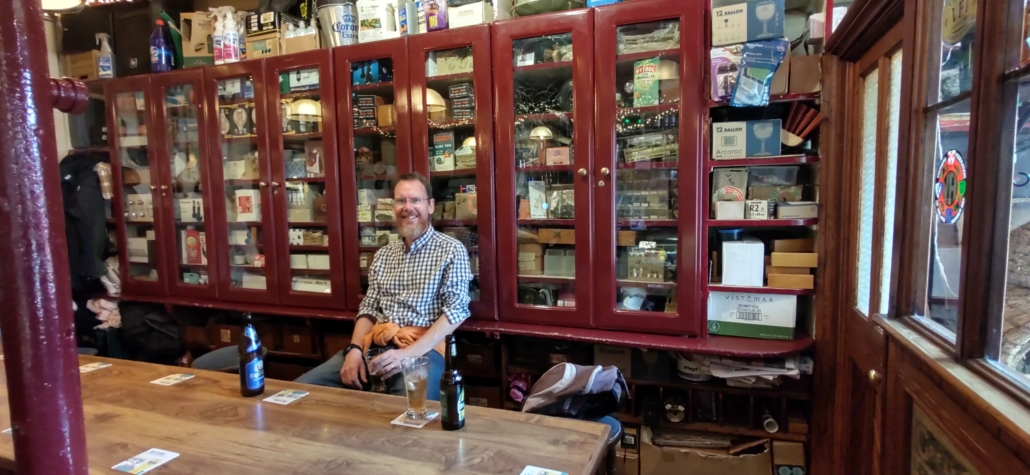
We were told that the place was so packed a couple of days ago on the bank holiday weekend you could hardly get in and the landlord had taken €40,000! There were only a handful of customers when we popped in for a drink, and it was clear they were all locals so we were able to grab a few photos of this slice of history.
After a lovely couple of days in Graiguenamanagh it was time to hit the road again this morning and make our way to the city of Kilkenny. We are trying our best not to keep saying ‘Oh My God, They KilKenny’ every five minutes, but after years of watching the cartoon South Park, it’s very hard to do.
As we were getting Zagan ready for the off a group of people walked past with fishing rods. Nothing usual there, but they were in their school uniform and being followed by two teachers. I don’t remember fishing being an option when I was at school, but I think it’s a great idea.

Ju x

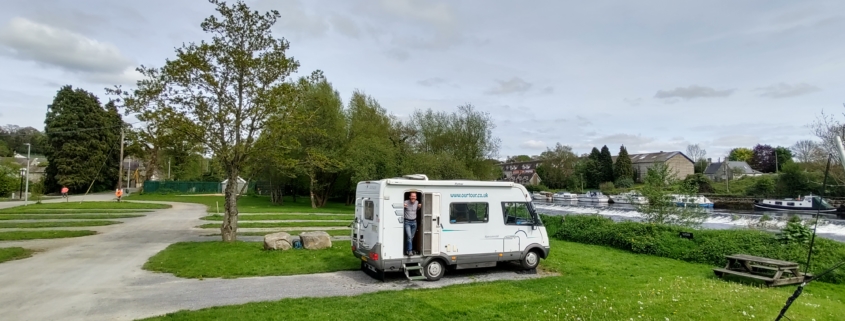
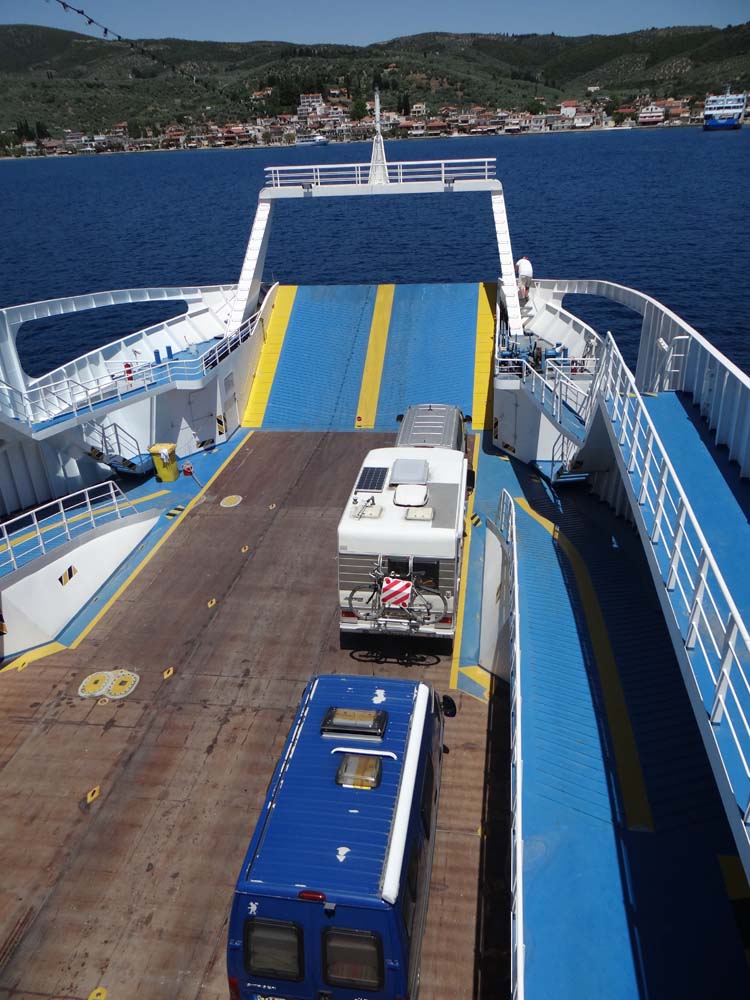

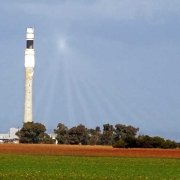

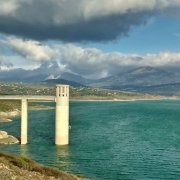
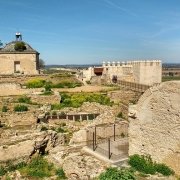


You would get 3 drinks for a 10er in England? Alcoholic or non-alcoholic, you wouldn’t. Worked out though :-)
I guess we’ve spent too long in the Wetherspoons Simon!
We’ve already done the research and we’ll be well stocked with cheap Spanish booze when we arrive on Monday!
Good thinking batman! The pubs here are very welcoming mind you – maybe worth blowing a few quid for a chat with the locals. Safe journey guys. Cheers, Jay